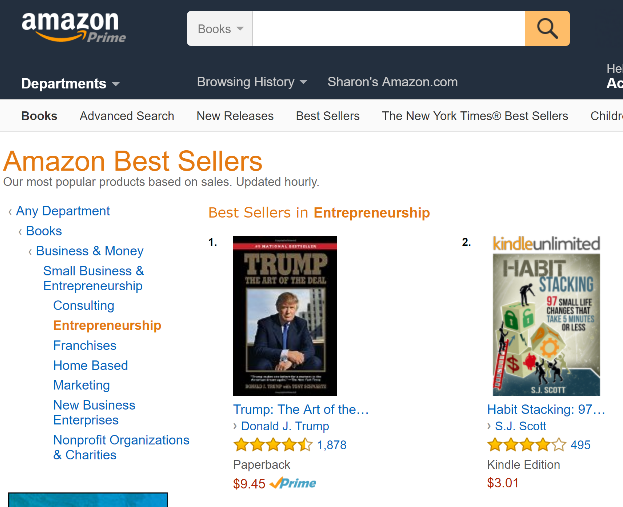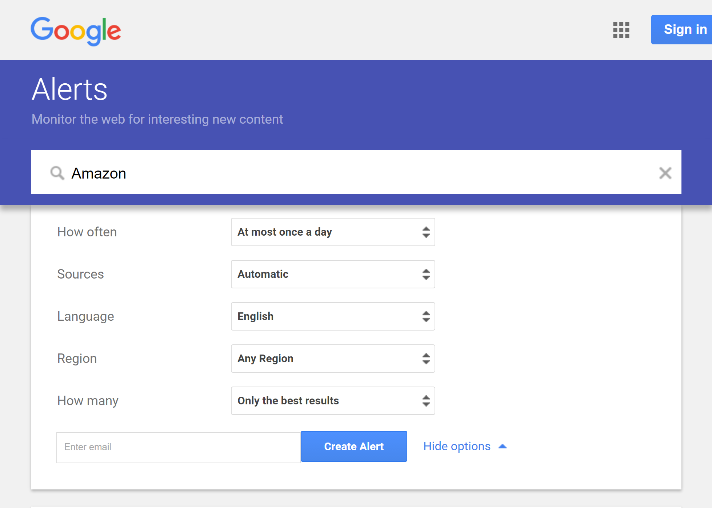
Steal these 5 tricks reporters use for fresh article ideas
You probably know that blogging is critical to building an audience for your business. But if you’re like most entrepreneurs, you often struggle to think of new topics to write about.
Good news: There are straight forward tactics you can apply to curb writer’s block. All you have to do is take a cue from journalists, who are masters at churning out fresh ideas day in, day out –– it’s their bread and butter.
I’ve worked in journalism for almost 30 years, and I know these techniques work as well now as they did three decades ago. Here are five tactics used by journalists to generate a constant flow of article ideas — plus how entrepreneurs can use them to create content their audience will love.
1. Constantly ask questions
Most publications survive on a steady diet of “why?”, “how?” and “what if?” A good journalist knows that following the best questions will lead to the best stories.
Here’s Hanover Evening Sun reporter Davin Jurgensen’s approach:
“I think about my own questions and thoughts and see how I can turn it around and develop it into something more. How do I do that? I do it by asking around, seeing if other people are interested in it too.”
You can do this, too. Brainstorm questions around a topic and ask other people if they’re wondering the same thing. If they are, you know you’re onto something.
I’ve applied this in my writing business, and it works. Take the topic of email marketing. A while back, I had a large email list with lots of inactive subscribers. I wondered whether or not I should prune my email list (pruning is the process of getting rid of inactive subscribers).
As I began to research the topic, I found that other people had the same question. So I expanded the question to: “What’s the best way to make your email list more effective?”
That question resulted in a couple of articles, most recently right here on IWT, where I showed how pruning your list can triple your email open rate.
In addition to brainstorming questions yourself, you can browse sites where people share their questions about specific topics, like Quora.
You can also use Answer the Public, a free consumer insight tool, to find popular questions that can lead to great article ideas. This site provides a visualization of Google search auto-suggestions, which are questions people have entered into the Google searchbar. Just plug in your topic, wait a few seconds, and you get a results page with a long list of related questions.
The screenshot shows some of the questions generated by a search for “content creation,” like:
- How much does content creation cost?
- What is social content creation?
- How do I outsource content creation.
Each of these would make a great blog post.
Don’t underestimate the power of curiosity in generating article ideas. Many IWT posts come from questions readers often ask, like How do I get people to open and read my emails?
Keep asking questions, and you’ll never run out of article ideas.
2. Keep a calendar of important events
Any journalist worth their salt keeps track of major events related to their niche, plus big holidays, and then generates timely article ideas around these events.
This is easy for entrepreneurs to replicate: Just create a calendar that contains all the events and holidays that are relevant to your niche. You can track things like:
- Major holidays that pretty much any niche can create content for (Valentine’s Day, etc.)
- Big conferences in your industry
- Upcoming book launches from influencers in your industry
You see this strategy in action all the time. It’s no accident that online publications like Mashable and TechCrunch have a constant flow of stories around big industry events.
They start with a list of events their readers care about, like big tech conferences, and then plan out different article ideas for each event. This may include live coverage, interviews, wrap-ups, and so on.
Sure, those publications have a stable of writers, but even if you’re the only person creating content for your business, you can still use this technique without turning it into a timesuck.
Here’s how:
- Create a new calendar for major industry events and holidays (you can use Google Calendar or any other calendar app you use regularly).
- Add all major industry conferences and events.
- Brainstorm 3-5 types of content you can create around holidays and industry events, like “why [name of conference] is the only conference you should go to this year” or “the best ideas from [name of conference].”
- If you have a product/service development roadmap, add content ideas relating to key milestones in the development process.
It shouldn’t take long to develop a rolling content calendar you can use throughout the year, just like the ones most journalists use. Make sure to plan ahead. Just as many magazines prepare their swimsuit issues in winter, you’ll need to get content prepared in advance so you can publish and promote it at the right time.
Once you’ve used a content calendar for a while, you can get even more article ideas by following up on past content. In the example below, Fortune magazine revisits its 2016 predictions to see what it got right or wrong:
source
This makes idea generation and content creation easy, because the bulk of the content is already there –– all you need to do is add some fresh commentary that reflects on your original piece.
3. Mine your contacts
For a journalist, their list of contacts is everything –– they constantly reach out to people in their network for quotes and leads on stories.
Even though I now write mostly for marketing and business blogs, I still do this on a regular basis. Last year, I interviewed Lance Jones about using a task management tool to manage conversion optimization.
I saved his contact information, and when writing a roundup of quotes from experts a few months later, it was a no-brainer to ask him to be involved. And then I contacted him again for an article on productivity.
And I don’t have an assistant managing my contacts. I do it on my own, which is why I know it can work for other busy entrepreneurs.
One way to manage your contacts is through your email software. But there are plenty of apps out there that make it easier to have up-to-date information on all your contacts. I like FullContact, which automatically syncs your email and social media contacts and allows you to keep detailed notes on each one.
Not only do your contacts make great sources, but you can also ask them for ideas about people you can reach out to for interviews and quotes. For example, IWT recently interviewed entrepreneur Tucker Max. Towards the end of the interview, they asked for suggestions for future interviewees, getting three ideas for people to feature in the future.
To sum it all up, here are three steps you can take to make sure your contact list feeds your content calendar:
- Organize your contacts in one place, either through your email software or a more sophisticated contact management system.
- As you build relationships with your contacts, add notes to their contact card about what topics they’re knowledgeable about and what they’re interested in.
- Whenever you’re working on a piece or brainstorming an idea, go through your contact list to see who might be able to provide an interesting perspective on the topic or a good quote.
4. Read, listen, and watch for inspiration
One of the best ways to spark new ideas is to develop a regular habit of consuming content from inside and outside your industry. Look for all types of media, including articles, podcasts, videos, and infographics. And remember to move beyond your information bubble –– it’s important to scan a wide variety of topics and points-of-view.
Feedly is a great tool to group content from a variety of sources in one place. You can sort them into “Collections” (like Business or Pop Culture) and then skim them once a day to see if anything sparks an idea you can add to your calendar.
You can also use Amazon as a source for article ideas. Just click on the “Best Sellers” link at the top of the Amazon home page, then navigate to the category you’re interested in to see the top books in that niche.
Click on one that interests you and read the description –– you’ll find ideas for articles without even having to read the book. Here’s part of the description for Be Obsessed or be Average by Grant Cardone:
And here are three article ideas that came to mind after reading this:
- Goal Setting: How to Achieve the Most Unlikely Dreams
- What Entrepreneurs Should Spend Their Money On
- Why the Doubters Were Wrong About My Business
Finally, keep tabs on important primary research published in your industry, like annual reports or major studies. When Simply Measured published a 2016 State of Social Marketing report, a number of companies jumped at the opportunity to write responses on their sites. You can do the same for your business.
Responding to key research in your industry is a great way to position yourself as a thought leader (and generate more article ideas). Don’t forget that if you know research is being published at a particular time, you can plan ahead and integrate it into your content calendar.
5. Be topical and timely (without wasting time chasing the news)
One of the best ways to generate article ideas that people can’t wait to read is to find a hook or angle related to a timely, popular topic. It’s no surprise that during the 2016 US election, many publications speculated about the effect that a Clinton or Trump victory would have on their niche.
Trust me, I get it: As a busy entrepreneur, you don’t have time to chase what’s relevant or newsworthy. But you don’t have to –– you can set up systems so that relevant information comes straight to your inbox.
Journalist Rebecca Searles recommends Google Alerts for staying on top of what’s happening in any given industry. To use Google Alerts, type in your keyword (or choose from a list of pre-selected topics), choose your sources – region and language, set an alert frequency, and enter your email.
And if you have time, check out Google Trends, which many journalists use to see what’s trending now and what has been popular in different niches and geographical locations over the past year.
How do you know if a trend is worth exploring? The News360 blog has a solid checklist that you can run your idea through:
Ask yourself these questions about any trend you spot. Your answers will help you zero in on great stories for your readers.
As you can see, finding article ideas for your blog doesn’t have to be a challenge. With a little help from the techniques that journalists use every day to find inspiration, you’ll have a rich well of content ideas that you can use to promote your business and wow your customers.



